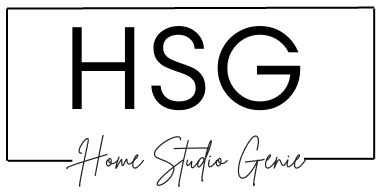Remaking songs is a popular practice among music producers and enthusiasts who want to learn from their favorite tracks. It helps them understand their production techniques, or create their unique versions.
FL Studio is a versatile digital audio workstation that provides a powerful platform for remaking songs.
In this article, we explore the step-by-step process of remaking songs in FL Studio, along with some helpful tips and techniques.
Understanding FL Studio For Remixing Songs
Before diving into the song-remixing process, it’s important to familiarize yourself with FL Studio. FL Studio is a versatile music production software that offers a wide range of effects and instruments.
These can be used for composing, recording, arranging, and mixing music. It supports various audio formats and provides a user-friendly interface.
FL Studio is suitable for both beginners and experienced producers.

DAW, Digital Audio Workstation, Remix Software, EDM Production
Features
– Powerful mixing and automation
– The best Piano Roll in the business
– Flexible Browser and workflow features
– Support for all VST standards
– Over 80 instrument and plugin effects included
Getting Started with Remaking Songs in FL Studio
Remaking a song involves deconstructing the original track and analyzing its individual parts. You can then recreate them using your own sounds and arrangements.
Steps To Remake Songs On Fl Studio:
Step 1: Select A Song to Remix
Choose a song that you would like to remake. It’s best to pick a track that aligns with your musical interests and skill level. Perhaps one of your favorite artists or a recent song.
Select a song that showcases interesting production elements or features instrumentation that you’d like to learn.
Step 2: Analyze the Original Song
Listen to the original song carefully and analyze its structure, arrangement, and sound design. Pay attention to the melody, chords, basslines, drum patterns, and any other significant elements.
These elements will come in handy when remixing a song on FL Studio 20.
This analysis will also help you understand how the song is constructed and guide your song-remaking process.
Step 3: Obtain Stems or Isolated Tracks
Having access to the stems allows for more accurate remakes and greater flexibility in changing the parts.
Step 4: Set Up FL Studio
Launch FL Studio and configure your project settings. Set the tempo, time signature, and other preferences according to the original song or your creative vision. Remember that your remix does not have to be the same as the original track.
Organize your workspace by arranging windows, plugins, and tools for efficient workflow.
Step 5: Import the Stems
This allows you to have individual control over each element during the remaking process.
Step 6: Align the Stems
Ensure that the stems are properly aligned in the timeline. Adjust their starting points and make sure they synchronize correctly with the original song.
This step is crucial for maintaining the song’s structure and timing in your remake.
Step 7: Recreate the Instrumentation
Start recreating the instrumentation of the song using FL Studio’s virtual instruments and plugins.
Pay close attention to the original sounds and textures.
Use synthesizers, samplers, and other tools to replicate the melodies, chords, basslines, and any other important elements.
Step 8: Add Effects and Processing on the FL Studio song
Enhance the sounds by applying effects and processing techniques.
Experiment with EQ, compression, reverb, delay, and other effects to achieve a similar sonic character to the original track.
Adjust the parameters to match the nuances of the song while adding your personal touch.
Step 9: Mixing and Mastering Your FL Studio Songs
Once you have recreated the instrumentation and applied effects, it’s time to mix and master your remake.
Balance the levels of different tracks, pan the elements in the stereo field, and ensure clarity and separation.
The successful remake of a song will need the use of mastering plugins to achieve a polished and professional sound. After some practice, remaking songs will become easier and you’ll eventually find your unique sound.
Related: 12 Common Problems with FL Studio (Fixed)
Common DAWs for Remaking Songs
| DAW | Song Remaking Features | Best For |
|---|---|---|
| FL Studio | Pattern-based workflow, extensive plugins and samples library, intuitive mixer | Remaking all genres especially rap/hip hop |
| Ableton Live | Clap/stretch algorithms for remixing, Session View for live performance, Link MIDI/Audio | Remaking EDM tracks, live performances of remixes |
| Logic Pro | Flex Pitch for pitch correction, Drummer plugins, Flex Time for tempo changes | Remaking pop, rock tracks with vocals/instruments |
| Pro Tools | Precise editing and tracking, industry standard, multichannel mixing | Remaking complex tracks requiring detailed work |
| Reaper | Customizable, affordable, wide plugin support | Remaking on a budget, experimenting with various DAWs |
Related: Are FL Studio Stock Plugins Good Enough? (8 Things To Remember)
Tips and Techniques for Remaking Songs
Here are some additional tips and techniques to enhance your song-remaking process:

Tip 1: Transcribing Melodies and Chords
If you’re willing to learn how to remake songs effectively, you’ll need some ear training or at the very least some music theory.
If you don’t have access to the stems, practice transcribing melodies and chords by ear. This improves your musical ear and allows you to recreate the song’s musical elements accurately.
Tip 2: Layering and Sound Design
Experiment with layering FL Studio sounds to achieve a fuller and more intricate sound. Combine multiple instruments and synthesize new sounds from scratch in order to add depth and richness to your song remake.
Tip 3: Using Automation and Modulation
Use automation and modulation to bring your remix to life. Automate parameters such as volume, panning, and effects to create dynamic changes throughout the song.
Modulate synthesizer parameters to add movement and expressiveness to your sounds.
Examples of Famous Song Remakes
| Original Song | Year | Remix Artist/Title | Genre of Remake | Streaming Numbers |
|---|---|---|---|---|
| Robin S. – Show Me Love | 1993 | Spinnai – Show Me Love | Big Room House | 100M + streams |
| Michael Jackson – Billie Jean | 1982 | Chris Brown – Forever | R&B/Pop | 300M + streams |
| The White Stripes – Seven Nation Army | 2003 | Joakim Karud – Melodica Remix | Instrumental Remix | 25M + streams |
| Eminem – Lose Yourself | 2002 | iMarkkeyz – Lose Yoself (TikTok Remix) | Viral Hit Remix | 150M + streams |
Related: Can You Use FL Studio For Live Performance? (6 Things To Expect)
Conclusion – How To Remake a Song in FL Studio
Remixing songs on FL Studio can be a rewarding and educational experience for music producers. You can create impressive remakes by following the step-by-step process and using helpful tips and techniques.
Your FL song remixes can showcase your skills and understanding of music production.
While remaking songs, try to add your personal touch and interpretation to make the remake unique. Take inspiration from the original track while incorporating your own style and creativity.
So, fire up FL Studio, choose a song you love, and start your experiment around to find a new angle for the chosen song.
FAQs
Can I Sell Or Distribute My Remakes Of Songs?
No, selling or distributing remakes of copyrighted songs without proper permission is not allowed.
It’s important to respect the original artists’ rights and seek legal advice if you intend to release your remakes commercially.
Are There Any Copyright Issues When Remaking Songs?
Yes, remaking songs involves copyright considerations. Remixing the song for personal learning purposes is generally acceptable.
But distributing or monetizing remixes may require permission from the original copyright holders.
Can I Use Samples Or Loops In My Remakes?
Yes, the usage of samples and loops in remakes is common among producers. However, make sure you’re using royalty-free or self-created samples.
How Long Does It Take To Remake A Song On FL Studio?
It can take anywhere from a few hours to several days or weeks to complete a high-quality remake. Time for remaking a song on FL Studio varies depending on factors such as the complexity of the original track.
You also have to consider your proficiency in using FL Studio, and the level of detail you want to achieve in your remake.
Can I Use My Remakes For Promotional Purposes?
Yes, you can use your remakes for promotional purposes. But it may require permission from the original copyright holders.
It’s important to understand the legal implications and consult with professionals or obtain necessary licenses before using remakes for promotional activities.

Mike is a skilled musician, guitar technician, and music producer with a passion for audio and gear. He excels in teaching guitar, editing podcasts/videos, and creating captivating soundscapes using cutting-edge hardware, software, and plugins. Mike’s talent and commitment make him highly sought-after in the industry, inspiring fellow musicians worldwide.


